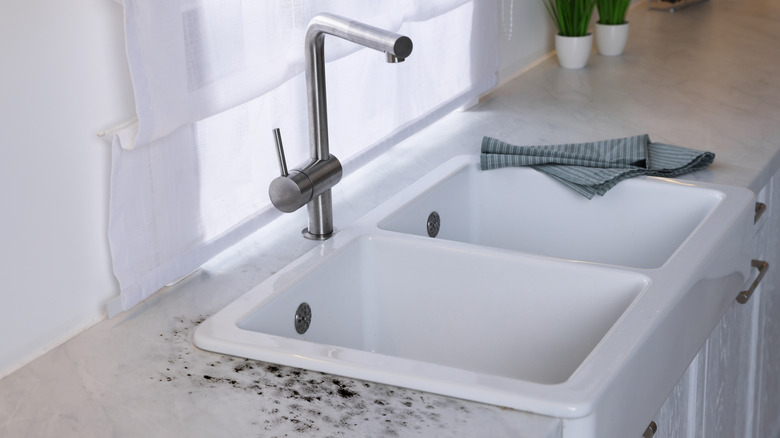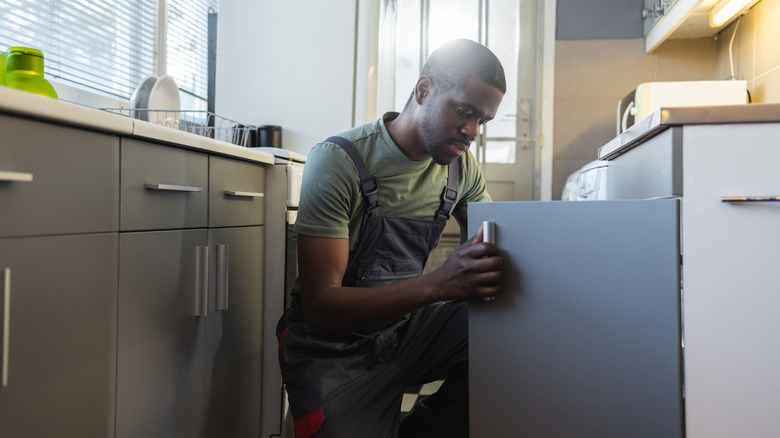Hidden Signs There May Be Mold Lurking In Your Kitchen And How To Find It
Invisible mold spores float around in your home undetected, but once they find a damp surface they can multiply on, you'll see visible growth that's easy to recognize. But not all mold spores settle where you can spot them growing, making it more difficult to identify mold in your home. That's why you need to start investigating if you notice hidden signs of mold, such as musty smells, dampness, and unexplained staining in your kitchen. It's also important to watch areas where the conditions are ideal for growing mold.
Mustiness or earthiness is often associated with mold, but you could also notice a rotten odor as the mold gets worse. At first, you might think you just have rotten food somewhere or even a pair of sweaty, stinky socks hiding somewhere. If your kitchen is free of rotting food, the smell could be coming from mold. Visible signs other than mold itself include darker grout lines, damp areas, dark discoloration, bubbling paint, warping on your walls, and soft areas on your surfaces.
Your body could help you detect hidden mold in your kitchen, especially if you have mold allergies or asthma. Being around mold could cause you to feel sick or irritated, with symptoms including wheezing, coughing, nasal stuffiness, and itchy eyes. If the mold is growing in your coffee pot (yes, mold could be one of the things that's lurking in your coffee maker), you'll likely notice your normal brew tastes different than you expect.
Finding mold in the kitchen
First, grab a flashlight. Some of the areas where kitchen mold grows can be dark. Begin your search for mold in areas where you notice possible signs, such as areas that feel damp or are discolored. You can also look in areas with ideal conditions where you could have excess moisture. Leaky pipes under your kitchen sink or behind appliances such as your dishwasher and refrigerator are prime culprits. Areas around where you cook and potentially spill liquids could also be to blame. However, kitchen mold can happen anywhere, especially if you don't have proper ventilation to remove the moisture from cooking, so don't overlook any areas.
Trust your nose if you notice smelly odors that may mean you have a mold problem in your home. Sniff for areas where the mold smell is more prominent. Look under, behind, and inside all items in your kitchen, including cabinets and appliances. It's possible for mold to grow in air ducts, so taking off the vent cover lets you look closer. If your search doesn't reveal anything, you could be dealing with mold behind your kitchen walls or under the flooring.
You can pay for professional mold detection services, which will likely run you between a few hundred and a thousand dollars. The mold inspector does a visual inspection and often takes samples to detect the presence of mold. If mold is present, the inspection cost doesn't include any mold removal or remediation. While this isn't the cheapest process, it can help to keep your family safe and prevent more serious issues down the line.

